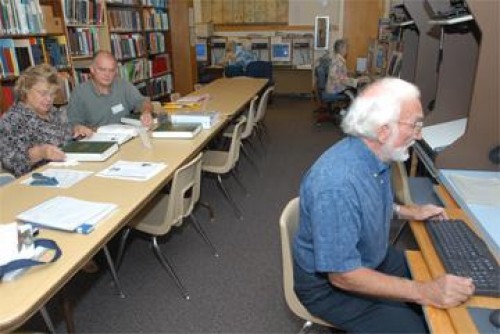Thibodaux Regional Medical Center’s North Hospital project complete
October 20, 2006Recently, due mostly to the improved access to information on the Internet, genealogical research has moved up to become the first or second most popular hobby, right up there with gardening. It is a very interesting hobby since it provides insight as to the life your ancestors led, here and often even prior to immigrating to the United States.
When I first started researching my family, I found a distant relative on the Internet who had put together quite a family tree that included my great grandfather, Thomas Palmer Noble. I started adding what I knew and even found cousins with whom I shared information. That was a dozen years ago, but at that point I became hooked.
I started looking in various places for information, like the Internet and the library, but was not doing that well in finding relevant information. Then someone asked me if I had visited the El Dorado Stake Family History Center at the Church of Jesus Christ of the Latter-day Saints on Cedar Ravine in Placerville. I told her that I wasn’t a member of the church and she said, that didn’t matter, it was free, open to everyone and was a great place to search for information.
On my first visit to the Family History Center I signed in and was given a friendly and quick lesson on what equipment and information was available. They now have eight, networked computer workstations, served by a high-speed DSL line with Internet access.
The computers can connect you for free with a number of “subscription” Website, such as Anscestry.com, Godfrey Memorial Library, Ellis Island Records.org and Rootsweb.com. Those alone can provide a lot of information, including indexed United States censuses from 1790 to 1930, along with Canadian and other foreign censuses.
In addition there is access to a number of other foreign and domestic sites, including a lot of California information, such as births and deaths and marriages by bride, along with a large number of other state’s vital records.
The Family History Center also has five microfilm readers, two microfiche readers and a large library of genealogical reference books, published family records and other printed research aids.
There is also access to the Family History Library Catalog in Salt Lake City, the home for 4.5 million rolls of microfilmed documents – the largest collection in the world. These can be rented and viewed at this Family History Center.
They have 50 trained volunteers, several of whom are there at any time to assist you in your research and help you with the equipment.
Okay, so you are new at genealogical research, but would like to find out about your family and ancestors. Where do you start, you ask? Lyle Goodwin, who is in charge of the local Family History Center was kind enough to sit down with me and share a bit of information for new researchers and even experienced researchers who have acquired information, but are having a bit of trouble putting it all together.
Start by identifying what you know about your family. Write down what you know, talk with your relatives and gather what information you can from personal journals, family bibles, scrapbooks, photo albums, letters, etc. Then record what you have on a pedigree chart and family group records. These charts and forms are easily found on the Internet or in some stationary stores.
Decide what you want to learn about your family. Select one ancestor you would like to learn more about, things like where he or she was born, the names of the children and parents. If possible select someone born before 1920 and look for missing or incomplete information to supplement what you have.
Select the records you want to research. There are three basic categories of records. The first is compiled records, which are records of previous research by others. Though helpful, and often many generations in length, some of the information may be inaccurate.
The second category of records is original records. These are birth, marriage, death and burial records. Although these are usually the most accurate of records, the information is only as good as the person who filled out the form. Your grandmother may not have known exactly where or when your grandfather was born and may have guessed both on his death certificate.
The third group of records, and the ones often most interesting, are called background information. These are records dealing with geographical, historical and cultural information.
Was there a book written about your family’s town or an event that one of your family members might have been a part of? Become one of them for a moment and you may find clues where you least expect them.
Finally, use the information you have gathered. Evaluate it to determine if it is complete or if more information needs to be gathered about a specific person or family. See if it conflicts with other information you have and see if the source is reliable. Then organize it using forms or one of the many genealogical software programs now available.
If you are at all interested in your ancestry and finding out more about it, the El Dorado Stake Family History Center is there with the information to help you find it. It is free (except for nominal copy costs) and it is friendly. It is located at 3275 Cedar Ravine Road in Placerville and is open Tuesday, Wednesday and Thursday from 10 a.m. until 9 p.m., and on Friday from 10 a.m. until 1 p.m.
For more information call 621-1378.
LYLE GOODWIN, right, does some research on the computer at the El Dorado Stake Family History Center at the Church of Jesus Christ of the Latter-day Saints on Cedar Ravine in Placerville as another couple checks some records. See story “Ancestry …” Democrat photo by Joanne McCubrey







